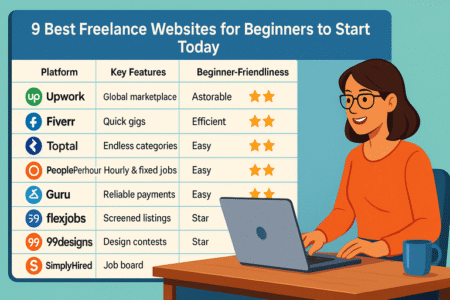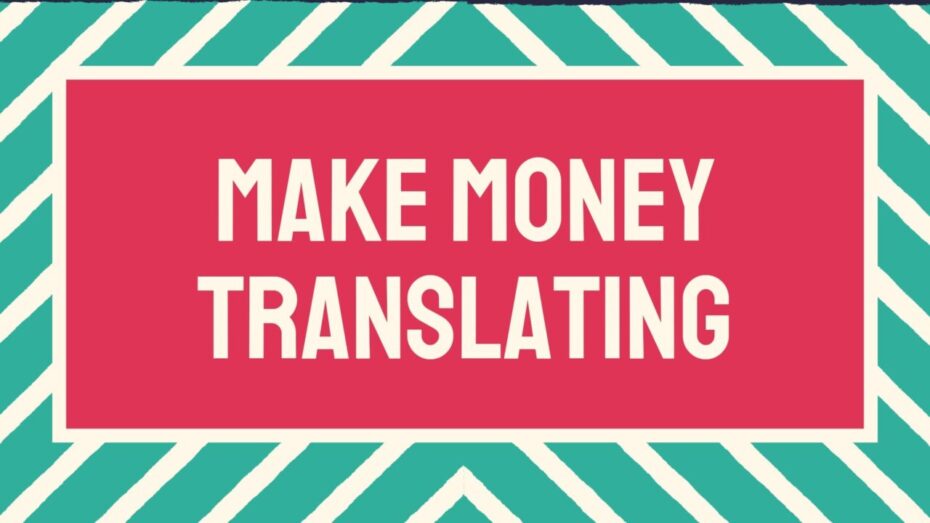Table of Contents
A freelance business analyst can turn data into direction—and independence into income. But how do you go from consulting gigs that barely pay the bills to building a six-figure career with consistent, high-value clients?
The answer isn’t just in analytics skills—it’s in strategy, branding, and smart client acquisition.
Let’s break down how you can transform your analytical expertise into a thriving, six-figure freelance business.
Understanding The Role Of A Freelance Business Analyst
A freelance business analyst is more than just a consultant crunching numbers.
They’re problem-solvers who bridge the gap between business needs and technical solutions, but with the freedom to choose their clients, projects, and income potential.
What Does a Freelance Business Analyst Actually Do
At its core, a freelance business analyst helps companies make better decisions through structured analysis and insight. Think of yourself as the translator between what the business wants and what technology can actually deliver.
You’ll typically:
- Identify business problems: By gathering data, interviewing stakeholders, and mapping workflows, you pinpoint inefficiencies or growth opportunities.
- Recommend solutions: Using techniques like SWOT analysis (strengths, weaknesses, opportunities, threats) or gap analysis to propose measurable improvements.
- Support implementation: You may guide teams in using software tools, updating processes, or tracking KPIs (key performance indicators).
In short, you help clients clarify goals, define requirements, and design data-backed solutions that drive revenue or efficiency.
Key Differences Between Corporate and Freelance Business Analysts
A corporate business analyst works within one organization, often bound by internal structures, hierarchies, and specific industries. A freelance business analyst, on the other hand, wears multiple hats.
Here’s what sets you apart:
- Freedom to choose clients: You decide which industries or projects to take on, from fintech startups to healthcare systems.
- Wider exposure: You’ll solve varied problems, gaining faster growth in skills and adaptability.
- Higher income potential: Freelancers can charge per project or retainer, often earning more than salaried peers.
- Business responsibility: Unlike corporate analysts, freelancers manage their marketing, invoicing, and contracts—essentially running a small business.
This difference in autonomy can feel daunting at first, but once you build systems, it becomes a major advantage.
Why Companies Hire Freelance Analysts Over Full-Time Staff
Companies increasingly turn to freelance business analysts because they offer flexibility, speed, and specialized expertise without long-term cost.
- Cost efficiency: Hiring a freelancer eliminates benefits and overhead expenses.
- On-demand expertise: Businesses can bring in niche specialists for short-term projects, like a Salesforce data migration or a digital transformation audit.
- Faster delivery: Freelancers often work more efficiently since their reputation depends on performance and timeliness.
From my experience, many small and mid-sized businesses prefer freelancers precisely because they can get senior-level insights without committing to a full-time salary.
Building The Essential Skill Set For Freelance Success
Your skills are your currency in the freelance world. To build a six-figure freelance business analyst career, you need both technical and soft skills that prove you can not only analyze—but influence outcomes.
Core Analytical and Problem-Solving Skills You Must Master
As a freelancer, your analytical skills are what clients buy. You need to quickly assess business pain points and craft practical, data-backed solutions.
Key areas to strengthen include:
- Data interpretation: Learn how to turn raw data into insights using Excel pivot tables, SQL queries, or BI dashboards.
- Requirements gathering: Perfect your ability to translate client goals into functional requirements.
- Process mapping: Use flowcharts or UML diagrams to visualize current vs. desired workflows.
I suggest practicing with real-world datasets or volunteering for small businesses early on—it sharpens your problem-solving instincts fast.
Developing Communication and Stakeholder Management Skills
Strong communication is what transforms good analysts into great ones. You’ll be explaining technical findings to non-technical clients, negotiating deliverables, and managing expectations.
Tips I’ve learned over time:
- Active listening: Repeat back what clients say to confirm understanding.
- Simplify language: Replace jargon with plain terms—for instance, say “We’ll automate this step to save time” instead of “We’ll implement workflow orchestration.”
- Empathy: Try to see the problem from your client’s point of view.
If you can make complex insights sound simple, clients will trust you with bigger projects.
Upskilling in Tools Like Power BI, SQL, and Tableau for Competitive Edge
Technical fluency gives you an edge in the freelance market.
- Power BI: Microsoft’s data visualization tool. You can connect Excel sheets, SQL databases, or APIs to create dynamic dashboards. Example: Home → Get Data → SQL Server → Load.
- SQL: The backbone of data analysis. Learning SELECT, JOIN, and GROUP BY queries allows you to pull the exact insights clients need.
- Tableau: Ideal for visual storytelling—clients love when they can see trends instead of reading about them.
These tools signal to clients that you’re not just theoretical—you deliver actionable data. I recommend dedicating a few hours weekly to refining your proficiency through real case datasets.
Continuous Learning to Stay Relevant in a Fast-Changing Market
The analytics landscape evolves quickly, and clients expect freelancers to stay ahead of trends. Whether it’s new automation tools or changing data privacy laws, staying updated keeps you marketable.
Practical ways to do that:
- Subscribe to newsletters like BA Times or Analytics Vidhya.
- Take micro-courses on Coursera or LinkedIn Learning.
- Attend virtual BA meetups or conferences.
I’ve found that regularly learning something new—no matter how small—keeps your confidence high and your proposals sharp.
Creating a Profitable Freelance Business Analyst Brand
Your brand is how clients perceive you before you ever speak to them. Building a profitable freelance business analyst identity means positioning yourself as an expert who delivers clarity and measurable results.
Defining Your Niche and Unique Value Proposition
Trying to appeal to everyone usually means resonating with no one. Pick a niche that aligns with your strongest skills or industry experience.
For example:
- E-commerce analytics: Helping online stores track sales performance.
- Healthcare data compliance: Advising on HIPAA-friendly data systems.
- Financial process improvement: Streamlining reporting systems for accountants.
Once you find your niche, define your unique value proposition (UVP)—a short statement of what makes you different. For instance: “I help growing startups make smarter product decisions through data-backed insights.”
Building a Portfolio That Showcases Real Business Impact
Clients don’t want buzzwords—they want proof. Create a digital portfolio that highlights real results.
Include:
- Project summaries: Show the problem, your approach, and measurable outcomes.
- Visuals: Add screenshots of dashboards (with sensitive data hidden).
- Testimonials: Even short client quotes build immense credibility.
I advise creating a simple website or Notion page as your portfolio hub—it’s quick, professional, and easy to update.
Crafting an Irresistible LinkedIn and Online Profile
LinkedIn is the heartbeat of professional freelancing. Your profile should instantly communicate credibility and value.
Focus on:
- Headline: Instead of “Business Analyst,” write “Freelance Business Analyst Helping Companies Optimize Processes Through Data Insight.”
- About section: Share your story, niche, and approach. Write like you’re having a conversation with a potential client.
- Featured section: Showcase portfolio links, testimonials, and any certifications.
I recommend updating your LinkedIn weekly—commenting, posting insights, and connecting with decision-makers can generate warm leads faster than cold outreach.
Personal Branding Strategies That Attract High-Paying Clients
High-paying clients are drawn to clarity, confidence, and consistency.
Here’s what works:
- Publish thought pieces: Write short LinkedIn posts explaining common business problems and how you solve them.
- Speak or host webinars: Position yourself as an authority.
- Build a newsletter: Even a small email list of professionals interested in analytics can generate steady work.
The key is to be visible where your target clients spend time. I believe consistent small actions—like one meaningful post a week—compound into powerful brand authority over time.
Setting Up Your Freelance Business Structure
Before you can scale your income as a freelance business analyst, you need to set up your business foundation correctly.
Think of this as the infrastructure that keeps your freelance career stable, professional, and legally sound.
Choosing the Right Legal and Financial Setup for Freelancers
The way you structure your freelance business affects how you get paid, how much tax you owe, and even how clients perceive your professionalism.
If you’re just starting out, you might begin as a sole proprietor, since it’s simple to set up—just start invoicing under your own name. However, as you grow, forming an LLC (Limited Liability Company) or Ltd (in the UK) offers legal protection and credibility.
It separates your personal and business finances, which is vital if you plan to sign corporate contracts.
For finances, I suggest opening a dedicated business bank account. Use tools like Wise or Payoneer for international payments—they’re faster and cheaper than traditional banks. Also, track income and expenses using simple accounting software like QuickBooks, FreshBooks, or Zoho Books.
In short: separate, automate, and protect. Those three habits can save you from headaches later.
Pricing Your Services to Reflect Value, Not Just Hours
Freelance business analysts often underprice themselves because they think in terms of hourly rates. The reality? Clients don’t pay for hours—they pay for results.
I recommend shifting to value-based pricing. Instead of quoting $50/hour, price your work around the business impact. For example:
- Process audit and improvement plan: $2,000–$5,000
- Power BI dashboard with insights: $1,500+
- End-to-end business requirements documentation: $3,000–$6,000
To find your sweet spot, calculate your desired annual income, then work backward:
- Decide how much you want to make (say, $120K/year).
- Estimate realistic billable weeks (around 40).
- Divide your target by 40 = $3,000 per week → price projects accordingly.
Clients respect professionals who confidently charge for outcomes, not time.
Managing Taxes, Invoicing, and Contracts Professionally
Freelancing means you’re both the finance department and the legal team. Getting these right from day one protects you and builds trust with clients.
- Taxes: Set aside at least 25–30% of your income for taxes. Use apps like QuickBooks Self-Employed to automatically calculate estimated quarterly payments.
- Invoicing: Create professional invoices using tools like Wave or Bonsai. Include payment terms (usually Net 15 or Net 30), and always list your business name, tax ID, and services rendered.
- Contracts: Never skip a contract. Templates from Dropbox Sign or Contractbook can help you outline deliverables, payment milestones, and ownership of deliverables.
I once had a client delay payment for two months—after that experience, I never started a project without a signed contract again.
Tools to Simplify Operations and Stay Organized
Freelancers juggle multiple projects, so using the right tools can save hours each week.
Here are some I personally recommend:
- Project Management: Trello or Asana to track deliverables and deadlines.
- Time Tracking: Toggl for monitoring billable hours, especially early on.
- Document Storage: Google Drive or Notion to store project briefs and templates.
- Automation: Use Zapier to connect apps (e.g., automatically save new client emails to a CRM).
Your goal is to create a lightweight, automated system that frees you up to focus on what matters most—client results and business growth.
Finding and Winning High-Value Clients
Once your structure is in place, the next challenge is finding clients who value your expertise and pay accordingly. Getting to six figures isn’t about working more hours—it’s about working with better clients.
How to Identify the Right Target Clients and Industries
The best clients aren’t always the biggest companies—they’re the ones who need your skill set and can afford your rates.
Ask yourself these questions:
- Which industries have recurring analytical needs? (Think SaaS, finance, healthcare, and e-commerce.)
- Who benefits most from data-driven decision-making?
- What problems do I solve best?
For example, if you’ve worked in retail analytics, target e-commerce businesses needing customer segmentation insights. They’ll immediately see the value in your experience.
Use LinkedIn Sales Navigator or Apollo.io to research potential companies and decision-makers before reaching out.
Proven Platforms to Find Freelance Business Analyst Projects
Not all freelance platforms are equal—some are goldmines for analysts, others are time traps.
Here are a few worth your time:
- Toptal: For experienced professionals. Clients are usually mid-size or enterprise-level.
- Upwork: Competitive but effective if you build a strong profile and collect reviews.
- Freelancer.com: Great for short-term or smaller analytical projects.
- LinkedIn & AngelList: Perfect for networking directly with founders or hiring managers.
A quick tip: tailor your proposals. Instead of generic pitches, mention the client’s actual problem and one quick suggestion—it shows initiative.
Effective Cold Outreach and Networking Strategies That Work
Networking is still the most powerful way to get clients, even in the freelance world.
Here’s a framework I use:
- Connect genuinely: Comment thoughtfully on LinkedIn posts within your niche.
- Reach out personally: A short, specific message works better than a pitch. Example: “I saw your post about scaling data reporting—I’ve built similar solutions for small SaaS teams if you’d ever like to chat.”
- Follow up: 80% of freelance deals happen after the second message.
Also, attend webinars, local business meetups, or virtual BA events. Being visible in your professional community pays long-term dividends.
Building Long-Term Relationships for Recurring Income
High-value clients stay when you make their life easier. The secret is consistency and proactive communication.
- Deliver early: Underpromise, overdeliver.
- Check in post-project: Offer a quick performance review call a month after delivery.
- Suggest next steps: Turn completed projects into ongoing retainers (like monthly data reporting or KPI optimization).
From my own freelancing journey, repeat clients became my most reliable income source—they already trust you, so every future project is easier to close.
Delivering Exceptional Value to Clients
Delivering exceptional value isn’t just about doing good work—it’s about making clients feel like you understand their goals better than anyone else. That’s what earns referrals, testimonials, and long-term contracts.
Understanding Client Needs Through Strategic Discovery Sessions
Before any analysis begins, take time to understand what the client actually needs, not just what they say they want.
Start every project with a discovery session, where you ask:
- What business outcomes are we targeting?
- How will success be measured?
- What systems or tools do you currently use?
Document everything in a simple requirements sheet or Notion page. When clients feel truly heard, they’re far more likely to see you as a trusted advisor rather than just a contractor.
Turning Data Insights Into Actionable Business Recommendations
Numbers alone don’t drive change—insights do. Your job is to turn analytics into a story that inspires action.
Here’s a structure I follow:
- Find patterns: Use Power BI or SQL to identify trends or anomalies.
- Contextualize: Explain why those numbers matter—e.g., “Customer churn rose 8% last quarter due to delayed deliveries.”
- Recommend action: Offer concrete steps, like optimizing logistics or adjusting pricing.
If you can link every metric to a business decision, your clients will see you as indispensable.
Communicating Findings in Clear, Impactful Reports and Dashboards
Communication is your secret weapon. Whether you use Power BI, Tableau, or Google Data Studio, focus on clarity over complexity.
I usually follow this rule: if a non-technical executive can understand it in under 30 seconds, it’s a great report.
Tips for clarity:
- Use simple color codes for KPIs (green = on track, red = needs attention).
- Include a one-page summary with actionable next steps.
- Add context to visuals, like trend lines or short annotations.
Tools like Canva can even help you design executive summaries that look polished without needing a designer.
Ensuring Client Satisfaction and Securing Repeat Projects
Satisfied clients are your best marketing tool. Every project should end with two goals: a testimonial and a follow-up opportunity.
Here’s a quick process I use:
- Deliver your final report with a personalized video walkthrough.
- Ask for feedback—what went well, and what could improve.
- Suggest a logical next step (e.g., quarterly data reviews or automation setup).
It’s worth noting: even one happy client can lead to three more through referrals. I’ve seen it happen repeatedly—and that’s how freelance business analysts build six-figure careers sustainably.
Scaling From Freelancer to Six-Figure Business
Once you’ve built a steady flow of projects as a freelance business analyst, the next phase is scaling. This is where you move from “getting by” to creating a sustainable, six-figure business.
Scaling doesn’t always mean working more—it means working smarter, building systems, and expanding strategically.
Transitioning From Hourly Work to Value-Based Pricing Models
The biggest mindset shift for any successful freelancer is moving away from hourly billing. Hourly pricing limits your income and often punishes efficiency—the faster you work, the less you earn.
Value-based pricing, on the other hand, aligns your fees with the impact you deliver. Let’s say you help a company streamline operations and save $100,000 annually. A $10,000 project fee is entirely justified because your work directly drives ROI (return on investment).
Here’s how to transition:
- Start small: For repeat clients, offer a project-based quote instead of an hourly rate.
- Frame the value: When pitching, emphasize the outcomes—not the tasks. For example: “This analysis will increase conversion rates by at least 15%.”
- Build proof: Use testimonials or case studies showing measurable results to justify higher rates.
I believe clients are happy to pay premium prices when they clearly understand the transformation you deliver.
Building a Small Support Team to Handle Operations or Data Tasks
Scaling as a solo freelancer often means outsourcing non-core work so you can focus on high-value strategy. A small, reliable support team can free up your time and multiply your earning potential.
Consider hiring:
- A virtual assistant (VA): To handle emails, scheduling, and proposals.
- A junior analyst: For data cleaning, report preparation, or dashboard setup.
- A bookkeeper: To manage invoices and tax prep.
You can find skilled freelancers on Upwork or Fiverr Business. Start with one person and delegate small, repeatable tasks. I personally recommend documenting your workflow with Loom videos—recording your screen while explaining the process makes onboarding easy and consistent.
This approach keeps your business lean while allowing you to focus on strategy, analysis, and client relationships—the work that truly moves the needle.
Expanding Into Consulting or Productized Services
One of the best ways to scale is by diversifying how you earn. Instead of trading time for money, you can sell expertise or products that scale independently of your hours.
Here are a few proven approaches:
- Strategic consulting: Offer retainer-based advisory services to clients who need ongoing guidance.
- Productized services: Create fixed-scope offerings, such as “Data Audit + BI Dashboard Setup” for a set price.
- Online resources: Develop courses, templates, or dashboards for other analysts or small business owners.
For example, I once packaged a recurring client’s analytics setup process into a “Business Intelligence Starter Kit”—a product that later became a new income stream.
If you can turn your expertise into repeatable frameworks, you’ll start earning more while working less.
Setting Income Goals and Tracking Business Growth Metrics
To reach six figures as a freelance business analyst, you must treat your career like a real business—with measurable goals and performance tracking.
Key metrics to monitor include:
- Monthly revenue targets: Aim for consistency before growth.
- Client acquisition cost (CAC): How much time or money it takes to win a client.
- Retention rate: How many clients return or extend contracts.
- Billable vs. non-billable hours: The ratio helps identify where your time goes.
I recommend using tools like Notion, ClickUp, or Google Sheets to track these metrics. Set quarterly goals (e.g., “close two new $5K projects” or “reduce unpaid admin work by 20%”).
Small, measurable progress compounds over time—that’s how a stable five-figure month becomes your new normal.
Common Mistakes Freelance Business Analysts Should Avoid
Even skilled analysts can hit roadblocks if they overlook the business side of freelancing. Avoiding these common mistakes will save you time, stress, and missed income opportunities.
Underpricing Services and Overworking Without Strategy
This is the trap most freelancers fall into—charging too little and working too much. Underpricing not only burns you out but also signals low value to clients.
If you’re constantly working but still struggling financially, it’s time to raise your rates. I suggest benchmarking your pricing against peers on Upwork or Glassdoor, then adding a premium if you specialize in a niche.
Clients equate price with quality. When you charge confidently and deliver excellent work, you attract better opportunities naturally.
Neglecting Contracts, Boundaries, and Professionalism
Skipping contracts is one of the costliest rookie mistakes. A clear agreement protects you from scope creep and late payments.
Use a simple contract that covers:
- Project scope and deliverables
- Payment schedule and late fees
- Intellectual property ownership
Equally important are boundaries. Set clear working hours and response times—clients respect freelancers who act like professionals. I learned early that saying “no” to weekend calls actually increased client respect and reduced burnout.
Failing to Market Yourself Consistently
Freelancers often stop marketing once they have enough work, but this creates a dangerous feast-or-famine cycle.
Marketing doesn’t have to be complicated—consistency is key.
- Post one helpful insight weekly on LinkedIn.
- Update your portfolio quarterly.
- Ask for testimonials after every successful project.
Even 20 minutes a week spent on visibility keeps your pipeline full. I like to call this “quiet marketing”—low effort, high trust-building.
Ignoring Skill Development and Industry Trends
The analytics field evolves fast. If you’re not updating your skills, you’re falling behind.
Dedicate time monthly to learn new tools or frameworks. For example:
- Explore AI-driven analytics in Power BI or Tableau.
- Study business process automation through Zapier or Make.com.
- Join BA communities on Reddit or Slack to discuss new methodologies.
Staying ahead of industry trends ensures you remain relevant and competitive—and clients notice that.
Expert Tips to Fast-Track Your Six-Figure Journey
You don’t need decades to reach six figures as a freelance business analyst—you just need the right habits and leverage points. These strategies can dramatically shorten your learning curve.
Leverage Testimonials and Case Studies for Social Proof
Nothing sells your services like results. After completing a project, ask your client for a testimonial and permission to create a short case study.
A strong case study includes:
- The client’s challenge
- Your analytical approach
- Tangible results (like “Cut reporting time by 40%”)
I recommend keeping these on your website and LinkedIn “Featured” section. Social proof builds instant credibility, making it easier to close new deals at higher rates.
Create Passive Income Streams Through Courses or Templates
Once you’ve developed repeatable workflows, turn them into digital products.
Ideas include:
- Excel or Power BI templates for common dashboards
- Mini-courses teaching analytics fundamentals
- E-books on data storytelling or requirements documentation
Platforms like Gumroad or Teachable make it easy to start. I’ve seen freelancers earn $1,000+ a month in passive income just from templates they already used with clients.
Network With Other Analysts and Industry Professionals
Networking isn’t about collecting contacts—it’s about creating collaborations.
Join professional communities like the International Institute of Business Analysis (IIBA), attend webinars, or contribute to LinkedIn discussions. Many analysts I know landed their biggest clients through peer referrals.
When people know you, like you, and trust your expertise, opportunities multiply organically.
Keep Refining Your Systems and Scaling Your Value
Six-figure freelancers rarely do more—they do better. Your goal should be to constantly refine how you operate.
Here’s what I suggest reviewing every quarter:
- Are my tools and workflows efficient?
- Which clients bring the highest ROI?
- What tasks can I delegate or automate next?
Use tools like Zapier or Notion AI to automate repetitive work, freeing up time for high-level strategy and marketing.
Remember, your value scales when your systems do. Consistency—not luck—is what separates thriving six-figure analysts from those who stall at mid-level income.






